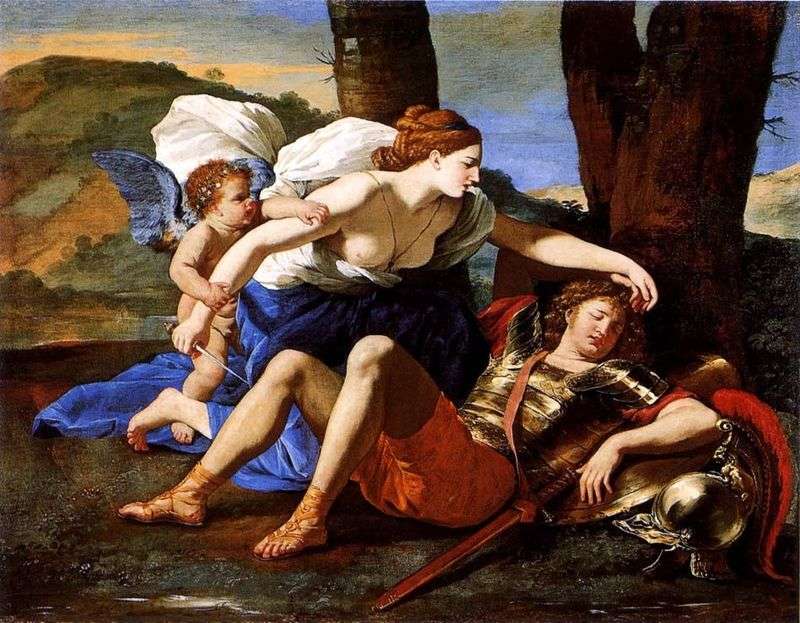
Poussin borrowed the heroes of this picture from the poem “Metamorphoses” by the Roman poet Ovid. Polyphemus is a cyclop, a scary-looking one-eyed giant who lived in Sicily, had a bad temper and smashed everything that came to hand. He was not engaged in crafts, but lived by what nature gave, and grazed herds.
One day he fell in love with the sea nymph Galatea. She was his complete opposite, and not only in appearance. Cyclopes in ancient mythology personify destructive forces, and nymphs are constructive, so Polifem could not count on reciprocity. Galatea loved Akida, the son of the forest god Pan. Tamed by his exalted feeling, the giant stopped smashing rocks, breaking trees and sinking ships.
Sitting on the coastal cliff, he began to play on his stool’s pipe. Formerly, the pipe was making terrible sounds. Now, a beautiful song poured out of it, and the nymphs charmed by the melody stopped laughing at Polyphemus, their eternal sucker satyrs, fertility deities with horse tails, horns and hooves settled down; heard, crouching on a rock, river god.
Nature itself was silent, listening to the music, peace and harmony reigned in it. This is the philosophy of the Pussen landscape: the world looks so wonderful when order is replaced by chaos. . Meanwhile, the cyclops, deceived in their hopes, once again gave free rein to the evil temper. He trapped the opponent and crushed him with a rock. Saddened Galatea turned beloved into a transparent river.
 Wrath of Polyphemus by Annibale Carracci
Wrath of Polyphemus by Annibale Carracci Landscape with a man who died from a snake bite by Nicolas Poussin
Landscape with a man who died from a snake bite by Nicolas Poussin Rinaldo and Armida by Nicolas Poussin
Rinaldo and Armida by Nicolas Poussin Apollo and Daphne by Nicolas Poussin
Apollo and Daphne by Nicolas Poussin Apollo and the Muses (Parnassus) by Nicolas Poussin
Apollo and the Muses (Parnassus) by Nicolas Poussin Tancred and Herminia by Nicolas Poussin
Tancred and Herminia by Nicolas Poussin The Triumph of David by Nicolas Poussin
The Triumph of David by Nicolas Poussin Arcadian Shepherds by Nicolas Poussin
Arcadian Shepherds by Nicolas Poussin